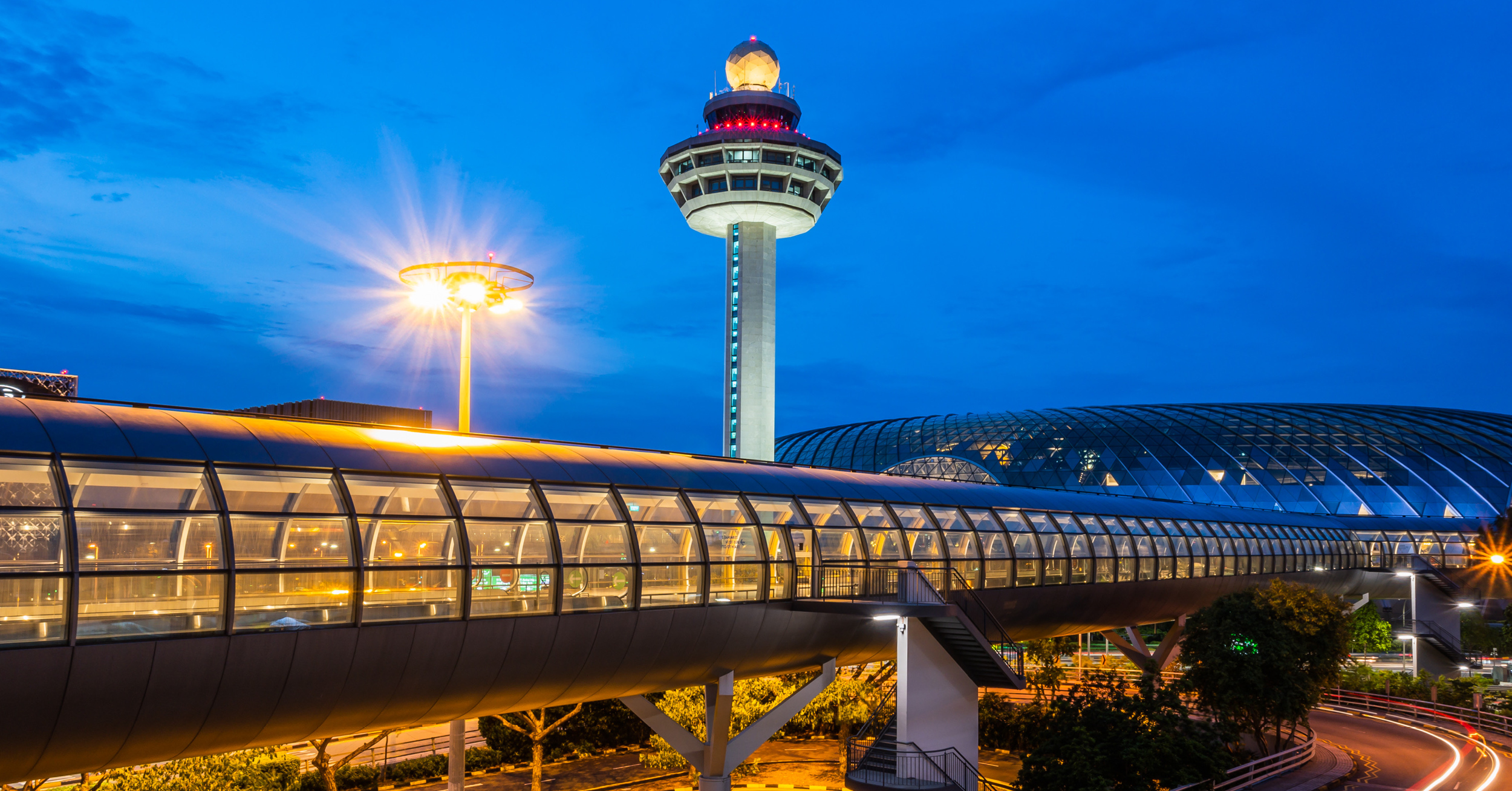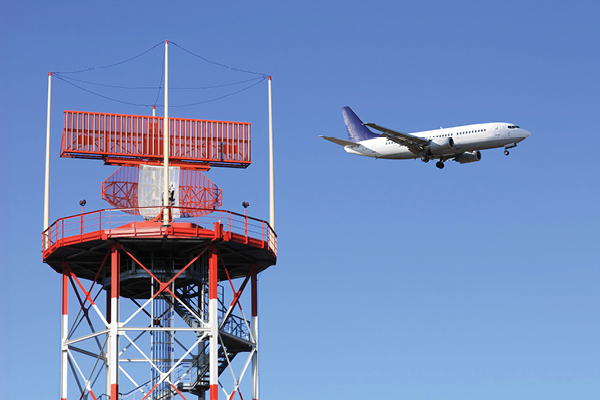Remarks of CANSO Director General, Jeff Poole, at the 2019 Hellenic Aviation Society General Assembly and Conference, 15 February 2019

Good morning and thanks to the Hellenic Aviation Society and my good friend, Kostas, for inviting me here today. I have been asked to speak about the outlook for the aviation industry and the opportunities and challenges ahead.
As the Director General of CANSO – the Civil Air Navigation Services Organisation – I will focus in particular on the air traffic management part of the aviation industry. But first I would like to look at the bigger picture for aviation in general.
Economic and social benefits of aviation
Aviation helps boost GDP growth, provides connectivity, access to markets and enables tourism. The Air Transport Action Group (ATAG), of which I am a Board Member,does an excellent job of highlighting the value of aviation to the world’s economies.
In its latest October 2018 report, Aviation benefits Beyond Borders, it found the global air transport sector supports 65.5 million jobs and $2.7 trillion in global economic activity, representing 3.6 percent of global economic activity.
Here in Greece, where tourism represents 20 percent of GDP, the benefits of aviation are especially clear. With many of Greece’s 30 million tourists arriving by air at major hubs such as Athens and many connecting via domestic flights to one of Greece’s 39 commercial airports, many of which are on the Greek islands.
The provision of efficient, safe and cost-effective air traffic management is a key enabler to the benefits of aviation. CANSO and its Members are achieving this through new technologies (such as spaced-based surveillance, digitisation) and new procedures (such as air traffic flow management, free route airspace). However, States also need to play their part by enabling harmonised airspace and investments in ATM infrastructure.
Managing traffic growth
A major challenge for air traffic management is the growth in air traffic that, without effective management and investment can lead to congestion, capacity constraints and delays.
Last year, the world’s air navigation service providers managed approximately 38 million departures globally and ensured that 4.3 billion passengers worldwide reached their destinations safely and efficiently. This was a 6.1 percent increase in passengers from the previous year. Greece is seeing over 60 million passengers arriving and departing on half a million flights a year.
With global passenger numbers set to double by 2036, the potential for congestion in our skies and capacity constraints at airports will increase. It is therefore vital that we find ways to continue to meet this demand and build a strong sustainable industry for the future.
CANSO and its Members are focused on delivering improvements to ATM to handle the forecast growth in traffic and to make it even safer, more efficient and cost effective. I would therefore like to focus on what I see as four critical components to achieving this: modernising infrastructure and implementing new technologies, new procedures and processes, investment and finance and people. For if we have the right tools, resources, processes and skills in place, air navigation service providers will be in a strong position to accommodate future demand and facilitate the goal of ‘flying for all’.
Modernising infrastructure and implementing new technologies
ATM needs investment in modern, efficient ATM infrastructure to ensure that increasing air traffic can be handled efficiently and safely. By ATM infrastructure, I do not mean just physical ground-based structures like control centres, towers, and radars, but also other elements such as airspace architecture and route structures, use of remote and digital tower services, space-based surveillance services and others.
New technologies are transforming global ATM performance, and the opportunities offered by big data will enable more efficient operations based on actual performance and greater cooperation across the industry.
This year sees the introduction of space-based ADS-B air traffic surveillance which will enable surveillance in oceanic and remote areas not currently covered and allow us to safely reduce separation distances, improving capacity. VOIP via satellites enable communications in remote and oceanic airspace.
Digitisation of air traffic control towers enables remote control of air navigation services at aerodromes thus improving connectivity through the ability to cost-effectively manage traffic at remote and lesser used airports with reduced costs, economies of scale, greater controller productivity and enhanced safety in increasingly busy skies.
System wide information management or SWIM enables the provision of the right information at the right time, anywhere that the user or system needs, while automation enables planes to fly closer together and ATM to build capacity, and artificial intelligence or AI will progressively replace today’s unique human input in dynamic decision making, for example in optimising airport collaborative decision-making.
Processes and procedures
While new infrastructure is essential in building capacity and improving efficiency so are the processes and procedures that underpin day-to-day operations, both within ATM and in cooperation with aviation partners.
Collaborative decision-making (CDM) for example helps implement efficient techniques to reduce delays and improve runway traffic flow. Airport collaborative decision-making (CDM) facilitates cross-industry collaboration through effective data sharing, coordinating actions on the ground, enhancing forward planning and improving tactical decision-making. CANSO has developed an A-CDM best practice guide [check link] to help industry operators improve coordination at airports.
Satellite based navigation is transforming airspace with ANSPs no longer having to rely on ground based infrastructure. Greece has been involved in the so-called RISE (Required Navigation Performance Implementation Synchronised in Europe) project under the auspices of SESAR, which has conducted trials resulting in shorter tracks and track miles savings, as well as continuous descent operations.
Air navigation service providers are increasingly cooperating to harmonise airspace over a wider area. In this part of the world the four ANSPs of BLUE MED FAB cooperate closely with the goal of harmonising and unifying air traffic management, increasing operational capacity, reducing the environmental impact of operations and lowering costs for airlines. BLUE MED is also cooperating with FAB Central Europe to optimise European airspace by shortening routes and exchanging information.
Another example of effective cooperation over a wider area is air traffic flow management (ATFM). This is the regulation of air traffic to ensure available capacity is used efficiently. Combined with CDM, it enables ATM to work with airlines and airports to manage traffic from gate to gate more efficiently improving air traffic flow performance, increasing capacity, alleviating congestion and delays and reducing CO2 emissions.
This process works best when States cooperate over a whole region. For example, the Asia Pacific Distributed Multi-Nodal ATFM Network involves 11 ANSPs, their airports and airlines. It has successfully reduced airborne holdings with aggregated fuel savings, and addressed airspace constraints in the region.
Meanwhile, CANSO’s CADENA [check link] (CANSO ATFM Data Exchange Network for the Americas) initiative is also enabling ANSPs and stakeholders to share operational information for safer, seamless airspace. CADENA currently has 13 ANSPs and 13 airlines as well as ICAO and the organisations representing airlines, airports and other industry partners. In addition, CANSO will shortly publish a new best practice guide on ATFM – Implementing Air Traffic Flow Management and Collaborative Decision Making.
Free route airspace is enabling aircraft to move away from flying fixed routes via waypoints and instead they can plan more efficient direct routes, with more stable trajectories saving flying time and reducing emissions. In Greece, the HCAA/ANSP project is gradually introducing FRA within Hellas UIR with full FRA scheduled for January 2020. It is estimated that it will save over 500 thousand nautical miles, 4 million tonnes of fuel and 12,500 tonnes of CO2 emissions over Greek airspace.
These are just a few examples of how modernising ATM infrastructure can help to leapfrog legacy ATM systems, expand capacity, and improve seamless operations – and we must do more to develop and implement the tools available. But to take these important steps, the industry needs the investment to support it.
Financing and investment in ATM
Modernising and improving the quality of ATM infrastructure requires large and long-term investments. Yet, too often such investment has to compete for funds with government priorities such as health, education and defence or indeed other aviation investments.
However, it is my belief that there is plenty of finance available for good projects with good business cases and that ATM has some worthy projects with very robust business cases, it is just these are often not properly articulated and advocated.
So first, we must do a better job of organising ourselves, our projects and our business cases in order to secure funding for investments – whether from governments, institutions or the private sector.
Secondly, regardless of legal status (non, part or government owned), ANSPs must be encouraged to operate like normal businesses, responsible for both revenue and expenditure. Too often, ANSP revenues from ATC charges go to a government’s finance ministry, while ANSP investment is sidelined. With the right operating models in place, ANSPs would be in control of both sides of the business, and could focus on delivering on expectations and preparing for future growth, while still securing stable financial returns. I would like to be clear that States do have a responsibility here – but that responsibility is to enable funding for infrastructure investments, not necessarily providing the funding themselves.
This is no small task. It requires a clear strategy and policy for aviation and ATM at not just national level but also regional level, long-term planning not short-term budgeting, proper governance of ANSPs, allowing them to act and behave as normal businesses, legal and regulatory frameworks that are performance-based, and consistency through the application of ICAO standards, ASBUs, GANP, GASP, etc. together with industry best practices. This should not be difficult but it does require political will and deliberate efforts to change.
People
New technologies such as digitisation and artificial intelligence are not only transforming air traffic management performance but also changing the role of air traffic control staff and the different skills they require now and in the future. Adaptation and flexibility are needed to implement these technologies safely and efficiently, and so a high level of performance from humans in the system has never been so important.
CANSO and its Members are developing new metrics for human performance and new innovative training and skills programmes. CANSO is launching the CANSO Standard of Excellence in Human Performance Management to help ANSPs manage these changes and improve human performance.
We must also look to the future skills pipeline, as by the mid 2030s the aviation sector is forecast to need a further 620,000 pilots and 125,000 air traffic controllers.
CANSO Members are at the forefront of developing training to support frontline and next generation ATM staff, from international collaborations to innovative simulation tools. In addition, CANSO works closely with the ICAO Next Generation of Aviation Professionals (NGAP) programme, promoting initiatives to inspire the next generation of science, technology, engineering and mathematics (STEM) professionals.
Embracing diversity is an important part of this; CANSO is currently a collaborative partner in a global study to identify and promote means by which the aviation and aerospace industries can more effectively recruit and advance women into leadership roles. CANSO has also played an active role in the Women in Transport – EU Platform for Change initiative, aiming to strengthen women’s employment, and equal opportunities for women and men in the transport sector.
In short, people are our most important asset and we must carefully consider the requirements and demand for this fundamental resource, continuously looking for opportunities to nurture and grow.
Conclusion
In conclusion, today I have highlighted the economic benefits that aviation brings to countries and the important role that ATM plays to ensure the aviation eco system runs smoothly, through smooth and efficient traffic flows and striving to avoid congestion and delays. But to do this, we need adequate investment in modernising ATM infrastructure to manage the increasing traffic growth. This ensures we have the right technologies, processes and procedures to cater for future demand.
And, of course, underlying all of this is the vital role that air traffic control staff continue to play. We must ensure they are well prepared for the new technologies and procedures and have the right training to do their job.
If we put all these elements in place, the ATM industry can continue to provide safe, efficient and cost-effective airspace.
Thank you.


